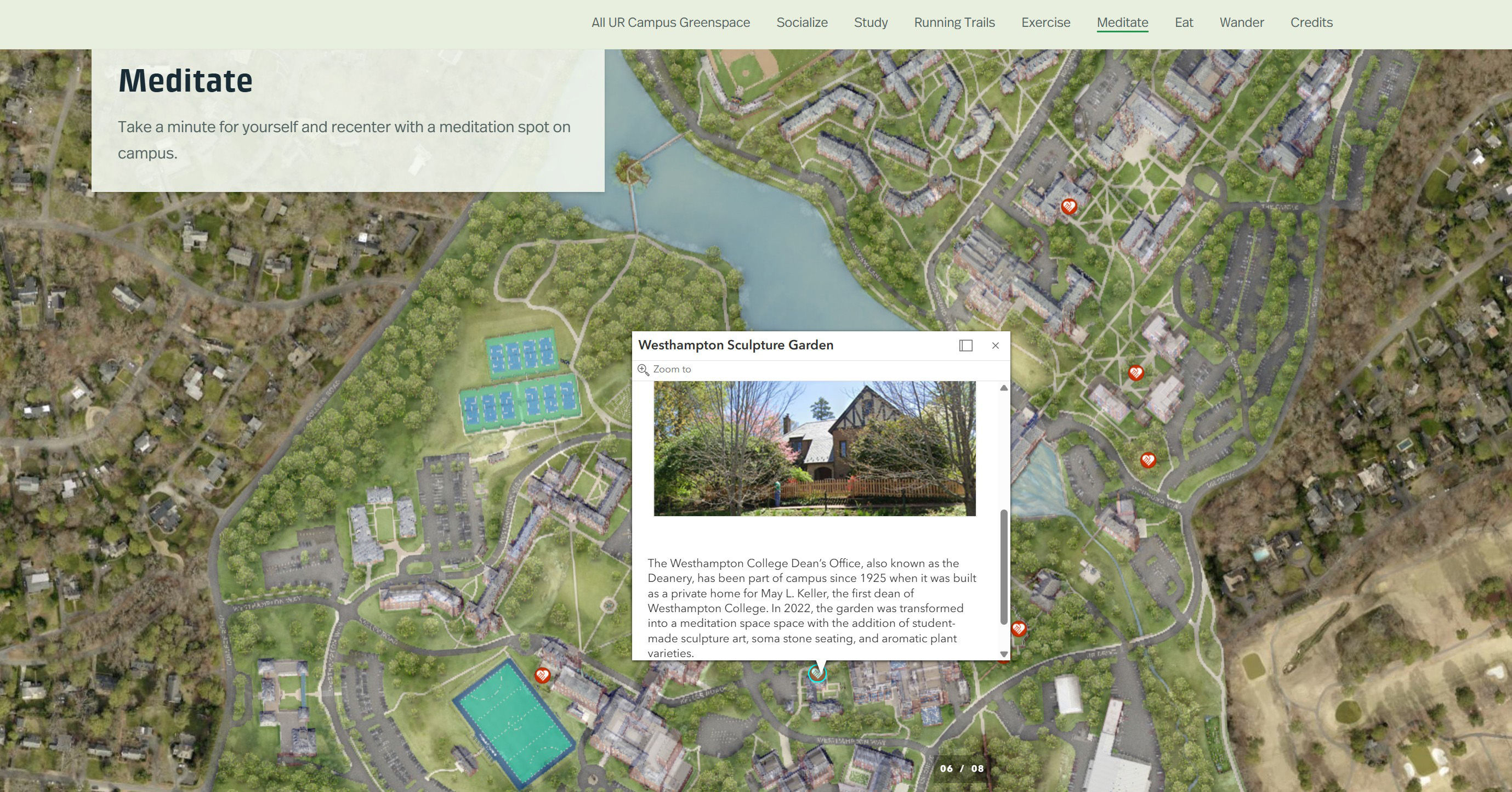A&S students mapped a way to experience the natural beauty at UR
Student Experience
The natural beauty that abounds throughout the 350 acres of the University of Richmond campus is just waiting to be enjoyed — whether from an Adirondack chair at Westhampton Lake or during a walk through the Eco-Corridor. The Princeton Review recognized UR as the No. 2 most beautiful campus.
Yvonne Donkor and Chelsea Waruzi, two students from the Class of 2027, aim to encourage their peers to spend less time in their residence hall rooms and more time outdoors through their “guide to peaceful, social, and scenic green spaces.” This information is now easily accessible online via the University of Richmond Campus Green Space Map.
Donkor and Waruzi selected this project from the options provided in their two-semester Medical Humanities Sophomore Scholars in Residence program, taught by Rick Mayes, the health studies chair and professor of health policy. In the class, they learned about the positive effects of nature and were drawn to the green space project.
“We had an assignment where we learned how being outside can improve your mental health," said Waruzi, a health studies major. “We wanted to help our fellow students.”
In the fall, they surveyed students to discover their preferred relaxation spots. “Most of their answers were, my room or my bed,’” said biology major Donkor. “And it told us how people don’t actually know about these green spaces on campus.”

The two students created a synopsis of their project by the end of the semester — what the map would look like and the types of information it would contain. The map includes more than 50 spaces, ranging from the Eco-Corridor, the Forum, and the Boatwright front lawn (known as “the beach”) to lesser-known spots like the Parsons Balcony and the Queally Center Courtyard. They identified places for socializing, studying, exercising, meditating, eating, and wandering.
Survey responses informed the map. For example, they added running trails after recognizing that some students enjoyed jogging in the morning or after class.
They also discovered many green spaces they had not been aware of before working on the project.
“There are meditation gardens we didn’t even realize were there,” Waruzi said.
Their inspiration came from a green space map created by the College of William and Mary. While that map included indoor spaces, the UR map is almost exclusively about outdoor areas. One exception was Tyler Haynes Commons, which features floor-to-ceiling windows overlooking the lake.
While conducting research, Donkor and Waruzi discovered the campus is home to nearly 9,000 trees. The map includes a link to the University of Richmond Tree Inventory, which is part of the Campus Tree Project started by two students in the Spatial Analysis Lab in 2012.
During the spring semester, the two were joined by students from some of Mayes’ other classes, including Stephanie Bird, Julian Burke, Hye Rhee Kim, Ismael Aly, and Huong Doan. Bird and Beth Zizzamia, GIS Operations Manager of the Spatial Analysis Lab, provided GIS support. The team created a base map using GIS plot points, photographed and wrote descriptions of the green spaces, and designed the website.
“I love it. They created something that shows how our campus is so much more than just beautiful. It’s a massive health promoter,” said Mayes. “The students who made this green space map are public health and environmental artists. I hope every student, staff, and faculty member uses it to help them find all the ways that our campus can enhance the quality of their physical and mental well-being.”

